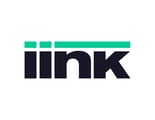Funds from insurance claims are distributed in specific ways to ensure compliance with legal, financial, and contractual obligations. This structured approach protects the interests of all parties involved.
Legal and Contractual Requirements
Insurance policies and mortgage agreements often dictate how claim funds must be handled.
Key Factors:
-
Mortgage Companies’ Interest:
- Mortgage companies are listed on the insurance policy as a co-payee because they have a financial interest in the property.
- They require oversight to ensure funds are used to restore the property, protecting their collateral.
-
State Regulations:
- Some states mandate that insurance funds be held in escrow and released in increments based on repair progress.
Incremental Disbursement
Funds are typically released in stages rather than as a lump sum to ensure repairs are completed properly.
Why Incremental Disbursement?
-
Accountability:
- Ensures funds are used exclusively for repairs and not diverted for other purposes.
-
Progress Monitoring:
- Mortgage companies may require inspections to verify that work has been completed before releasing additional funds.
-
Risk Management:
- Protects against fraud or incomplete repairs that could leave the property in a diminished state.
Escrow Management
When a mortgage company manages the funds, they are often held in an escrow account.
Purpose of Escrow:
-
Acts as a safeguard to ensure funds are used appropriately.
- Provides a controlled environment for distributing payments to contractors and vendors.
Protection for All Parties
This distribution method safeguards the interests of all stakeholders.
-
Homeowners:
- Ensures the property is restored to its pre-loss condition.
- Reduces the risk of substandard or incomplete repairs.
-
Mortgage Companies:
- Protects their financial investment in the property.
-
Contractors:
- Ensures payment upon verified completion of work.
Common Scenarios
-
Large Repair Projects:
- For extensive repairs, funds are released in stages to align with project milestones.
-
Multiple Stakeholders:
- If multiple parties are involved (e.g., homeowner, contractor, multiple mortgage companies), funds are divided according to contractual obligations.
-
Deductibles:
- The homeowner is responsible for covering the deductible amount, which is not included in the disbursed funds.
How iink Simplifies Distribution
iink’s platform is designed to streamline fund distribution while adhering to these requirements:
- Tracks progress and milestones for fund release.
- Facilitates communication between homeowners, contractors, and mortgage companies.
- Provides clear updates on fund status and timelines.
- Users can view the fund distribution breakdown of their check directly on the claim in the iink app.
By understanding why funds are distributed this way, you can better navigate the process and ensure repairs are completed efficiently and in compliance with all requirements.
